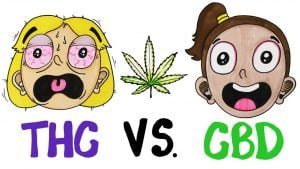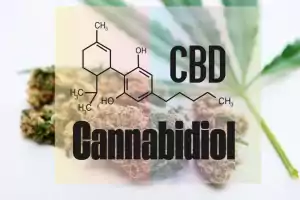English
Cannabidiol (CBD) is one of the cannabinoids found in cannabis. For a long time it has stood in the shadow of its better-known brother tetrahydrocannabinol (THC), although (or perhaps because) it has no psychoactive effects, i.e. it does not cause any intoxication. However, it also has medicinal potential.
Recently, CBD has been gaining the attention of scientists, doctors and patients alike. Animal research and early clinical studies indicate that CBD has significant therapeutic potential for many health conditions due to its anti-inflammatory and neuroprotective effects. So how is CBD different from THC and how can it help us?
CBD versus THC
As mentioned above, THC is psychoactive, i.e. it causes the well-known high, whereas CBD does not. Although both substances are phytocannabinoids (phyto means that they come from plants), each has a different effect on the human body. THC primarily targets cannabinoid receptor 1 (CB1), which is primarily located in the central nervous system.
CBD regulates the effects of THC (and reduces the feeling of being high) by acting on other receptors. In other words, it is a THC inhibitor. Simply put, if a person is not feeling well after taking THC and is experiencing symptoms of anxiety or depression as a result of an overdose, CBD will help them get back to normal.
CBD extract is most commonly produced from industrial hemp, which is different from the varieties used to make marijuana, i.e., cannabis sativa or indica. However, special varieties with a high CBD content are also widely cultivated, and their appearance and smell can be compared to classic marijuana with high THC content.
How to take CBD
CBD is most commonly bought in oil form. Either it contains other cannabinoids or it is purified, meaning it contains no other cannabinoids.
However, many manufacturers of CBD oils are also containing terpenes and other cannabinoids.
In addition to oils, CBD in plant form is also growing in popularity, in teas that contain 3-4% CBD and minimal THC.
There are a variety of ways to get CBD into the body, from tablets to transdermal patches or vaping.
Patients with serious illnesses such as cancer or epilepsy often use extracts high in CBD and other cannabinoids, known as Phoenix Tears, which are usually also high in THC, making them an often illegal medical treatment. You can read more about Phoenix Tears in the article here.
The principle on which CBD works
CBD is a trigger associated with certain receptors in the human body. Receptors are receivers that give commands to certain processes in the body based on a signal.
In the case of CB1, cannabinoid receptors are found primarily in the central nervous system, but also in paired organs such as the lungs or liver. In addition to the red and white blood cells, CB2 receptors are also found in the central nervous system, but extend to peripheral nerve endings, such as the limbs or skin.
The receptor system allows cannabinoids to enter the endocannabinoid system in the body. This system influences a number of bodily functions and conditions such as mood, memory, motor function, immune response, reproduction, bone growth, pain perception, hunger or drowsiness. The endocannabinoid system is responsible for maintaining balance in the body. According to recent studies, CBD seems to help restore this balance when needed.

When CBD helps
CBD remains very understudied, not least because it acts in a very complex way in the body. Its effects are not confirmed and officially recognised by doctors. However, patients with the following diagnoses are using CBD:
- Bowel diseases such as Crohn’s disease
- Chronic and neuropathic pain
- Parkinson’s disease
- Infections caused by resistant bacteria
- Diabetes
- Lupus and other autoimmune diseases
- Arthritis
- Depression and post-traumatic stress disorder
- Cancer
- Drug addiction
Article source : softsecrets.com
Published by Kotelnik
06/06/2022choose and buy cannabis seeds from our offer
our pleasure




























